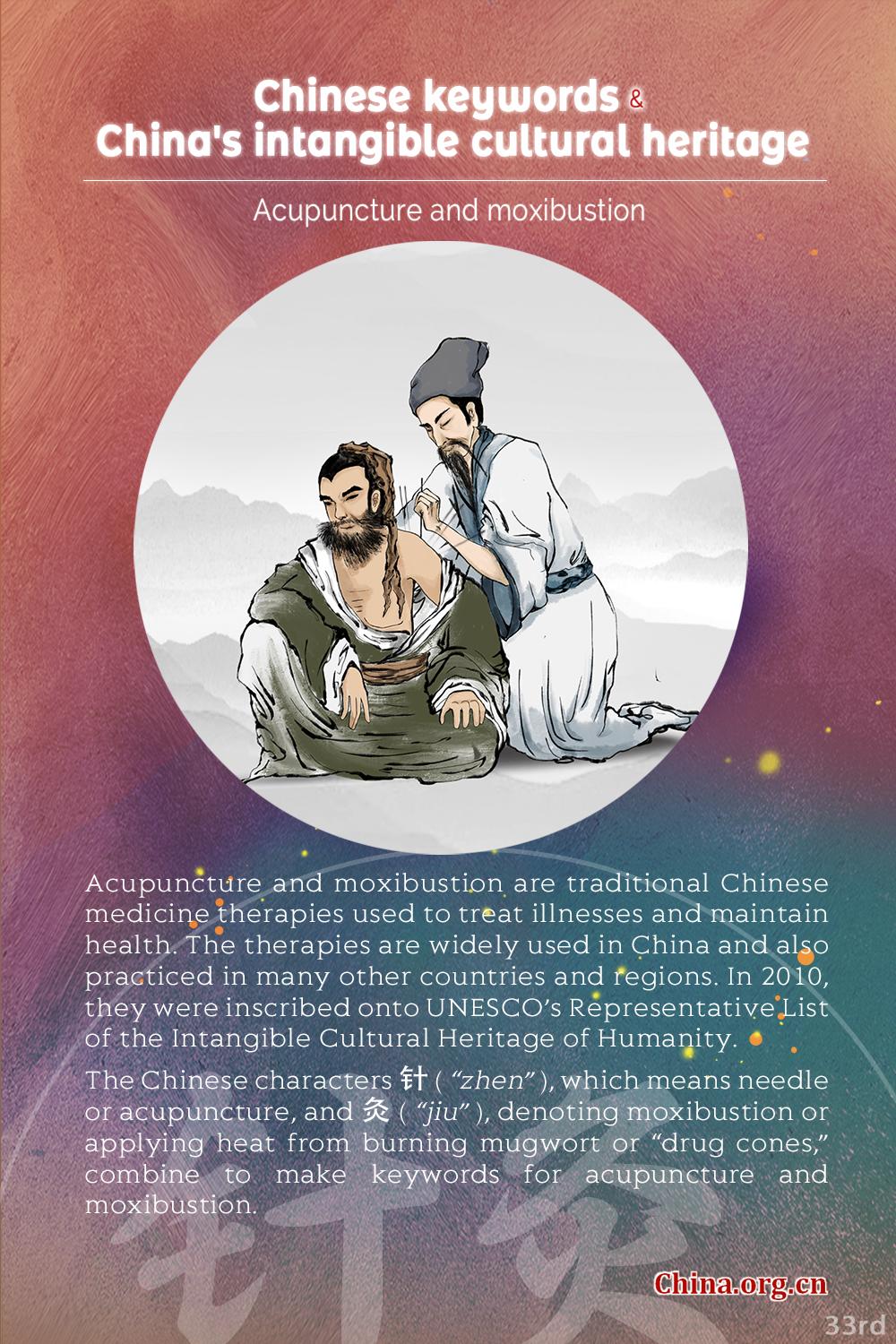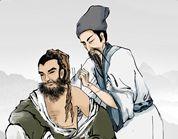Acupuncture and moxibustion and their Chinese keywords
- By Zhou Jing
 0 Comment(s)
0 Comment(s) Print
Print E-mail China.org.cn, October 20, 2023
E-mail China.org.cn, October 20, 2023
Editor's note: Acupuncture and moxibustion are traditional Chinese medicine (TCM) therapies used to treat illnesses and maintain health. They are most often used to relieve pain, spasms, numbness, and swelling by inserting fine needles into specific "points" of the body or by burning mugwort, or moxa, near the skin to warm them.

Both acupuncture and moxibustion are believed to have originated during the New Stone Age, with metallic pins starting to be used in acupuncture in the 8th century B.C. Archaeological findings from tombs dating to the 3rd century B.C., such as gold pins and other medical devices, prove that acupuncture and moxibustion have been employed for medical purposes in China for several millennia.
Today, the therapies are still widely used in the country and also practiced in many other countries and regions around the world. In 2010, they were inscribed onto UNESCO's Representative List of the Intangible Cultural Heritage of Humanity.
The Chinese characters 針 ("zhen"), which means needle or acupuncture, and 灸 ("jiu"), denoting moxibustion or applying heat from burning mugwort or "drug cones," combine to make keywords for acupuncture and moxibustion in traditional Chinese medicine.
As UNESCO describes, the theories of acupuncture and moxibustion hold that the human body acts as a small universe connected by channels. By stimulating these channels, physicians can improve or heal a patient's ailments. This stimulation involves the burning of mugwort near particular parts or the insertion of needles into certain acupuncture points along these channels.
Which points are selected is vital in deciding the effectiveness of acupuncture and moxibustion. Therefore, over several thousand years, generations of physicians have worked hard to locate, identify, and clarify hundreds of acupuncture points so as to smooth the channels within the body by better stimulating their corresponding points.
Acupuncture and moxibustion are commonly accepted thanks to several features, including their applications in treating a wide variety of diseases; their ability to prevent, alleviate, or cease pain; the fact that they incur slight or no side effects; and that they're cost-effective.
As such, they are gaining global popularity. Nowadays, acupuncture and moxibustion workshops and clinics can be seen all over the world and have even been noted to function as a part of a modern healthy lifestyle within and beyond the Chinese communities. In addition to their traditional functions in treating illnesses, they are also applied in beauty salons to improve skin rejuvenation, stress release, and weight loss.
The fast development of modern technology has also promoted the innovation of traditional acupuncture and moxibustion. For example, a China Daily report states that the development of laser acupuncture has allowed traditional techniques to access points that needles cannot, and improving needle manufacturing technologies are making the practice safer and more comfortable for patients.
At the FISU World University Games recently held in China's city of Chengdu, enthusiastic athletes from different countries queued to experience traditional Chinese medical therapies. Of all the TCM treatments, acupuncture and moxibustion were among the most popular services in the FISU Games Village. Young athletes who were curious to try such practices left with a new understanding of their benefits, setting off a "craze for TCM."
Find out more about China's intangible cultural heritage and their keywords:
China's 43rd UNESCO's ICH element: Traditional tea processing
China's 42nd UNESCO's ICH element: Wangchuan ceremony
China's 41st UNESCO's ICH element: Taijiquan
China's 40th UNESCO's ICH element: Lum medicinal bathing of Sowa Rigpa
China's 39th UNESCO's ICH element: Twenty-Four Solar Terms
China's 38th UNESCO's ICH element: Abacus-based Zhusuan
China's 37th UNESCO's ICH element: Training plan for Fujian puppetry performers




